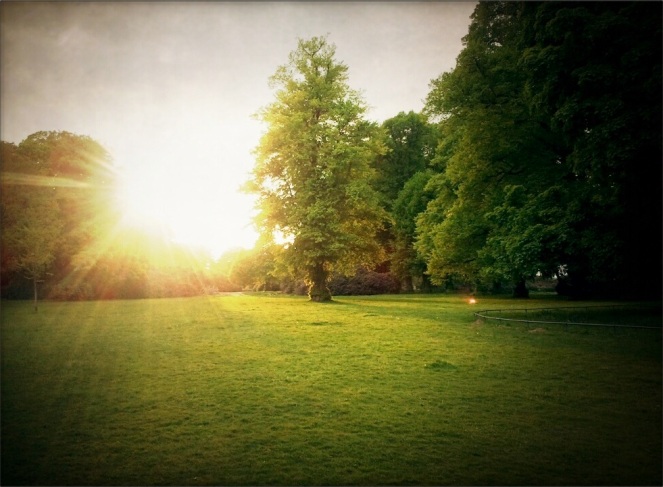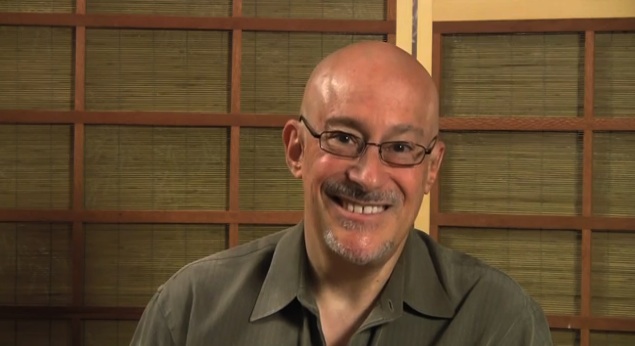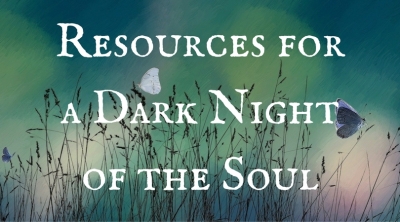After busting some enlightenment myths, I thought I should look at what enlightenment actually is, with the rather obvious disclaimer: I’m not enlightened, although I am working on it… maybe in the next life!
The first thing to say is that it isn’t possible to say what enlightenment reveals. The true nature of reality is beyond concepts and language, so cannot be expressed. It can only be lived as Being.
In the simplest terms, enlightenment means seeing through the illusion of separateness, and it happens in stages. It usually starts with a glimpse – a tiny peek behind the curtain – often called ‘stream entry’ or kensho. In the Ox Herding Pictures, this is the moment when the ox is spotted lurking in the bushes.
With practise, the understanding of emptiness, or No Self, will grow, and the first real, mind-shattering satori will arrive. This is awakening proper – the moment where you first realise you are not you and are not separate from everything else. This realisation takes time to fully integrate and ground in your daily life. In the Ox Herding Pictures, satori is the moment when both ox and herder disappear.
Integrating this vision of unity consciousness takes time and may involve a descent into the darker sides of your self in a Dark Night of the Soul. This can be a difficult time but is necessary in order to integrate the shadow. Enlightenment means taking responsibility for your life and how your consciousness interacts with Source, so it is important to be honest with yourself and allow the healing to occur.
“One does not become enlightened by imagining figures of light, but by making the darkness conscious.” – C.G. Jung

Not Perfect
Enlightenment doesn’t mean living permanently in the light. It is about wholeness and the balance of the opposites. The shadow is embraced, understood and healed, not obliterated. It is helpful to remember that the more light you have, the darker the shadow you cast. Being enlightened doesn’t mean being perfect and always having the answers. It means being who you are. Being human with equanimity and compassion. Being present with what is without getting attached or having any expectations.
In short, it’s nothing like you imagine it will be.
Shinzen Young says that people both overestimate and underestimate how good enlightenment is. You may think you want to be free, but you should be careful what you wish for. He describes enlightenment as being “like falling off a cliff that never ends and you’ve acclimatised to it.” You are permanently removed from your comfort zone.
In Zen, they say it’s like riding the ox backwards. The ox is Buddha Nature, your True Self (or rather No Self), and you are carried along. The ox knows where it’s going (perhaps!) but you don’t. You have no idea what’s going on. You are taken where the ox goes and you are not in control. Can you live with that level of faith?
Watch this great short video of Shinzen Young discussing some of the myths and downsides of enlightenment:

Enlightenment is Destructive
All the positive qualities that arise due to enlightenment do not get added to you. Awakening isn’t about being a better version of yourself. Who you think you are is destroyed by this process, not perfected. There will be more awareness, more clarity, more joy, success, and so on. But it’s not about you.
Enlightenment is not about having a self that has those qualities. The perfection, the positive qualities, are always there, hiding underneath the confusion of the ego – you just have to step out of the way. If you want to be free and enlightened, then you must pay the price. What is that price?
To attain enlightenment you must surrender everything you ever believed in and everything you thought you were. You must even surrender enlightenment.
Visit the Dark Night Resources page for tons of links:
Images: Sun in Trees; Shinzen Young

That is so spot on.
Then you went on to so masterfully use words to allude to it.
Nice trick/joke.
Nice book title too.
LikeLike
Thanks cabrogal. Just found your site – lots of interesting things to read. It might take me a while to catch up…
LikeLike
Yes, words get in the way, and at the same time…there is such beauty in the words!
LikeLike
Good article, Jessica
The point about stages is more than you describe. The initial Satori and Unity consciousness, for example, are actually distinct stages and awakenings with their own realities. Occasionally, someone moves very quickly into the second and it seems as one. But more typically there is some time between them. The first can come with an inner sense of Unity with that which underlies all things. But true Unity consciousness is when that is discovered in the world as well. We are one with all, then contain all.
Also about terminology. The sense of emptiness is typically associated with the vast open space of self-aware consciousness. This may not be obvious at first. Someone with more samadhi’s prior to awakening will tend to be more familiar and may use the term fullness rather than emptiness. Fullness not of something but of vast potentiality. This can become more obvious as the process develops.
Another term used distinctly in different traditions is Self and no-self. No-self points to the end of a personal self or sense of me. Similarly, in the Vedic traditions, the shift to Atman or cosmic Self is the same thing – personal me falling away, replaced by pure Being.
It’s curious how the same thing can have apparently opposite words for it. I’ve noticed 5 distinct ways awakening may be noticed subjectively, with a range of flash and release that may or may not come with it.
I would also note that while awakening is indeed destructive, this is mainly in the experience of the transition. As it settles in, we find nothing was really lost. It simply stopped binding us. Identification is what is lost although sometimes it feels like more. And yes, we must surrender it all, even just for a moment…
LikeLike
Thanks for the great comment Davidya. There are so many different ways of talking about this process, I suppose we have to choose a tradition that resonates with us as an individual before we can move beyond identification with the personal self.
The fullness emptiness paradox (if that’s the right word) exists together in one ‘experience’ too. Empty of self and full of potential, or life force – for want of a better term. I really need to study Advaita, it seems like a good system for making sense of all this…
LikeLike
Hi Jessica
Thanks. I don’t think we need to find a tradition first. Sometimes it happens spontaneously. I know several people that found a path and began meditation after waking up. But yes – a teacher or teaching that resonates with us at that point in the journey. Sometimes, that may change.
Agreed – there can be both. On Advaita, I would proceed with caution. There is presently a strong “neo-advaita” meme that is concept-laden and minimalist. Everything is really an illusion, all is one, etc. Almost existentialist. But advaita or non-duality is about the development of Unity, after awakening. Vedanta describes the “stitching” together of wholeness by the lived experience of Unity. This is not a denialism but rather is inclusive of all. The Upanishads are a decent source.
They’re famous for I am That, Thou art That, All this is That, That alone is. In some ways, these describe the stages of realization. In another, they’re described as mahavakyas – one of which is the trigger for the Unity realization. Unity is a shift of the intellect from looking out and dividing to looking in and joining.
LikeLike
Thanks Davidya – another great comment. I had to choose a path at the start because I grew up without any kind of religion – unless you count music!
But the neo-adviata meme you mentioned is interesting. Obviously I don’t know much about it, but it would seem that perhaps they’re getting stuck in the second kind of teaching in Buddhism. The first being that you learn about the nature of suffering and attachment; the second teaching is about recognising emptiness; and then the third brings it back down to earth when you learn form is emptiness and emptiness is form. It’s the old: before enlightenment mountains are mountains and rivers are rivers, then mountains are no longer mountains and rivers are no longer rivers, then after enlightenment mountains are mountains and rivers are rivers again. And of course, Brahman alone is real; the world is illusory; Brahman is the world.
Like you say, it’s about seeing the whole – which is a paradox because it contains all. So hard to write about this, so I’ll shut up!
LikeLike